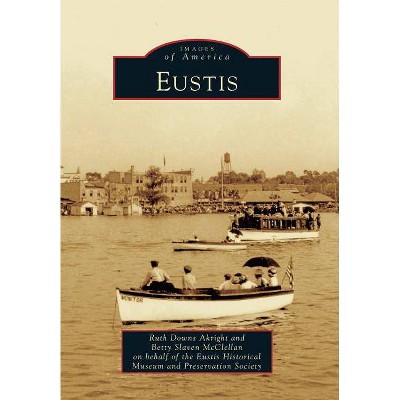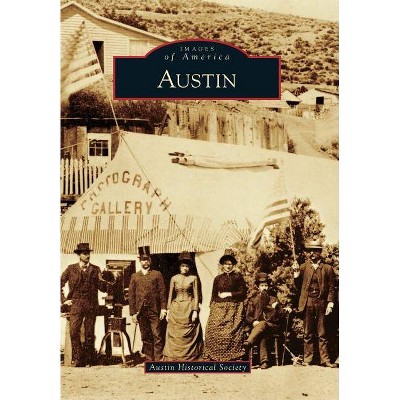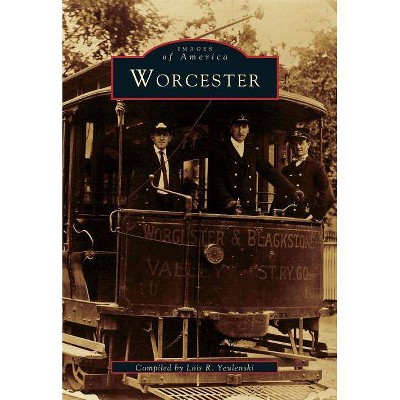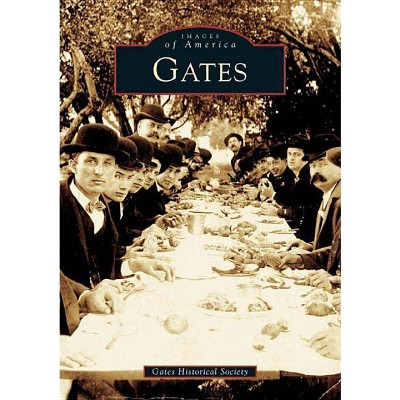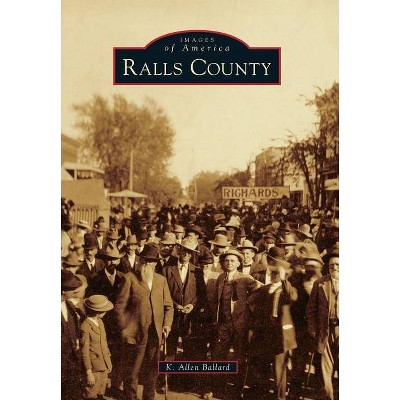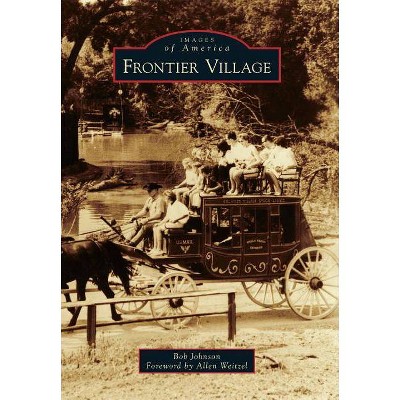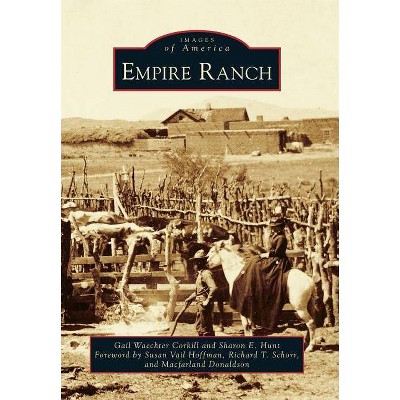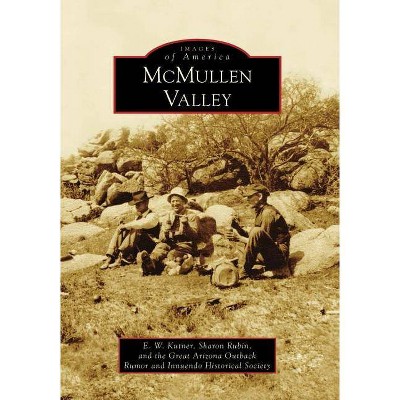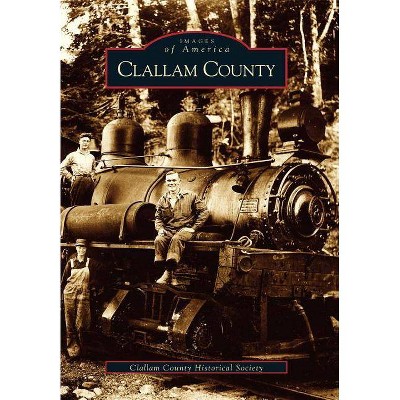Bridgton - (Images of America (Arcadia Publishing)) by Ned Allen (Paperback)
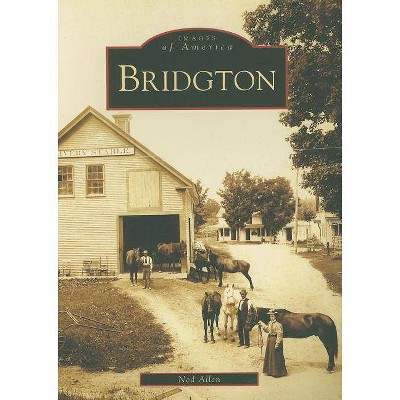
Similar Products
Products of same category from the store
AllProduct info
<p/><br></br><p><b> Book Synopsis </b></p></br></br>In 1768, Jacob Kimball moved to the shores of Long Lake in North Bridgton, building a store and providing boat service from Standish, at the southern end of Sebago Lake. Jacob Stevens soon followed, building a sawmill and gristmill on what became Stevens Brook in the center village. Ten power sites on this short brook ran lumber, textile, and other mills, as well as a tannery. Bridgton became the area s commercial center as retail stores and businesses sprang up to support the many mill workers and farm families. The first train on the narrow-gauge Bridgton and Saco River Railroad chugged into town in January 1883. Tourists and artists soon discovered Bridgton, and today the town remains a diverse mix of creative, hardworking people."<p/><br></br><p><b> Review Quotes </b></p></br></br><br>Title: Q & A - Ned Allen - Bridgton's past very much present <BR>Author: Julia Davis <BR>Publisher: Lakes Region Weekly <BR>Date: 12.24.08 <P><BR>Those interested in learning more about the history of Bridgton now have a new resource a "Bridgton," a book written by Ned Allen, president of the Bridgton Historical Society. <P><BR>The book is one of thousands in Arcadia Publishingas Images of America series. It combines vintage photographs and illustrations with captions and an introduction with an overview of the townas history. <P><BR>Allen, 54, described pulling the book together as similar to putting together a museum exhibit, meant to be both entertaining and informative. He has been involved with the historical society since 1995. <P><BR>Q: What surprised you in your research? <P><BR>A: One of the things that I didnat find surprising because I pretty much knew it, but I think some people wil be, l is the industrial history of Bridgton, which is considerable. There were at least 10 power sites on Stevens Brook, which runs through town, and a lot of mills, textile mills, various types of lumber and woodworking mills. So there was all that industrial history going on, especially in the second half of the 1800s. <P><BR>Q: When did the mills start closing down? <P><BR>A: In the earlier part of the 20th century. A lot of them had converted from water power to steam. The automobiles and the trucks changed patterns of production and so on, that obviously spelled the demise of the railroad. And I guess the manufacturing was probably consolidated into bigger mills in larger cities. <P><BR>Q: How has the nature of the town changed over the years? <P><BR>A: Now there is less industrial activity, though there is still some. Bridgton has a fairly healthy mix still, but far less of the manufacturing than there was 100 years ago or so. I think probably one of the bigger changes in the last few decades would be more and more people commuting to Portland or somewhere more than just five or 10 miles, but still living here in Bridgton. <P><BR>Q: What has stayed the same? <P><BR>A: I think Main Street has maintained its scale and character to a remarkable degree, which is one of the really important reasons we need to preserve things and not go too far in an unwise development. A lot of the institutions are still there a the newspaper, the churches. There is kind of a community spirit that remains. There is a mix of local people whose families have been here for generations, summer visitors who are here for a few days and others whose families have been coming all their lives. <P><BR>Q: What are some interesting stories readers could learn from the book? <P><BR>A: Thereas the story of Walter Hockings, who was mostly a summer resident. He was an executive at one of the big department stores. But when he would come home to his house down near the town beach, apparently he would honk the horn of his car, which sang the tune, aHow dry I am, a and that let the folks in the house know that it was time to start mixing up the cocktails for him. <P><BR>Q: Does this area have a long history of summer visitors? <P><BR>A: It does. As early as the 1860s or '70s there was a hotel on top of Pleasant Mountain and people came for the mountains and the lakes and so on. From the 1870s or '80s, the steamboats would bring people. When the railroad came in 1883, that was another link that brought folks in. Alot of it was spurred on partly by some of the artistic and cultural types. Olive Fremstad, who was a Metropolitan Opera star, had a summer home on Highland Lake for a decade or two in the early 20th century. There was a prominent voice teacher in Harrison who attracted several other opera stars. The Saco Valley Music Festival was a big musical festival that she and other big names at the time would perform at each year. Those artistic and cultural ties were one part of the summer people in Bridgton and the whole surrounding area of the Lakes Region. <P><BR>Q: Having learned about the history, does it change the way you look at the town? <P><BR>A: I have a much clearer idea of what was there. You immerse yourself in something like this and you almost see the history in the buildings, especially in Bridgton, where so many of them are still there. Some of the streetscapes, like the lower part of Main Street and Pondicherry Square, you know, most of the buildings are 100 years or so old. You look at the old pictures and thereas no doubt in your mind what youare looking at. The stop lightas not there, but itas clear what is there. I think about the old mills, too, because that was such a presence and only one on lower Main Street is left at all. Some of them were really big buildings, a big presence in town. <P><BR>Q: Why do you think itas important to preserve old buildings? <P><BR>A: There are several reasons. One is that they are historical artifacts, which are important not just because people see them and you react to them and you are reminded, thatas certainly important, the immediacy of it. There is also actual evidence there, historical evidence. The kind of styles and constructiontells you about what was really happening beneath the surface in town back then. On a more practical level, itas becoming increasingly clear that historic preservation is economic development, especially in a place like Bridgton. We need visitors. People come to Maine for the natural beauty and so on, but they also expect to find attractive old villages and man-made landscapes as well. If they come and itas all strip malls and fast food, that lessens the experience. <P><BR>Q: What do you hope for people to get out of reading the book? <P><BR>A: A deepened sense of Bridgtonas past, and an understanding. I think people assume that agricultural and farming and rural pursuits were going on. Fewer people I think are aware of the industrial aspect. And based on that, an appreciation of the importance of preserving the past. It plays an active role in our lives. I do believe that it is important to understand that you canat really understand where you are until you know where youave been.<br>
Price History
Price Archive shows prices from various stores, lets you see history and find the cheapest. There is no actual sale on the website. For all support, inquiry and suggestion messagescommunication@pricearchive.us

